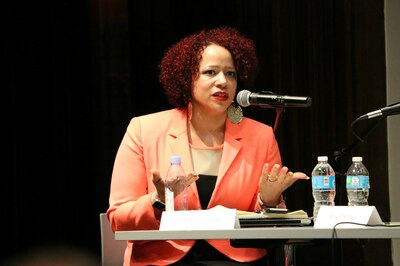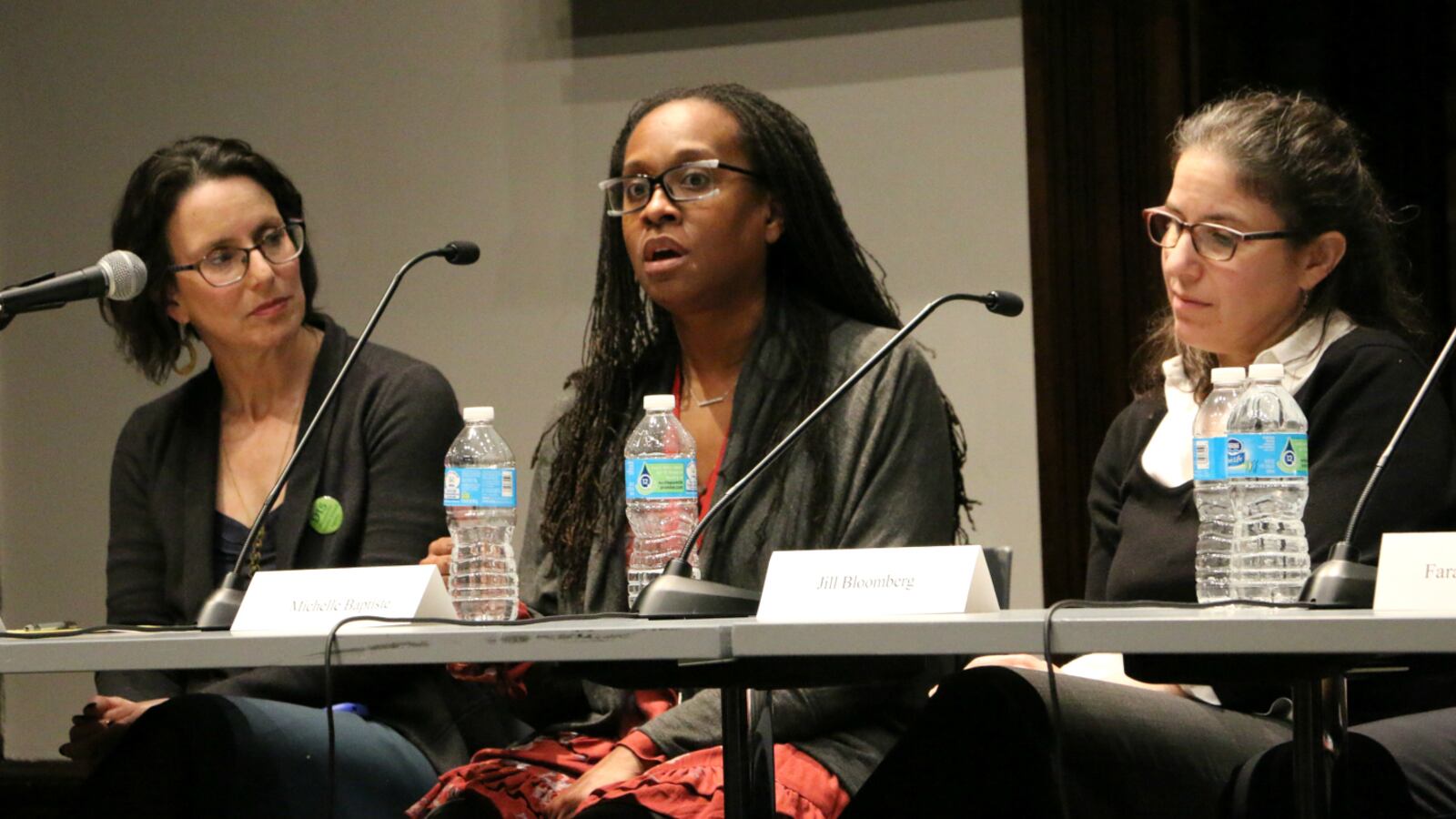Confronting one of the nation’s most segregated school systems, New York City’s schools chief recently said she is searching for ways to alleviate the problem “organically,” without mandating changes.
But that approach won’t suffice, several educators and parents said during a discussion Tuesday at the Brooklyn Historical Society. With enrollment policies and parent choices together fueling a system where more than half of schools qualify as severely segregated, they suggested that small-scale remedies that rely on local buy-in will fall short.
“The segregation wasn’t organic, and the integration is not going to be organic either,” said Jill Bloomberg, the principal of Park Slope Collegiate, a grade 6-12 school in a gentrifying part of Brooklyn where many schools remain racially isolated.
Michelle Baptiste, a teacher at P.S. 92 in Prospect-Lefferts Gardens, Brooklyn, put it more bluntly.
“I don’t think that we can look to the Department of Education,” she told the crowd. “They haven’t taken any leadership.”
The relatively rare public criticism of the education department by employees reflects the frustration felt by some educators — and some parents and advocates — who had hoped that Mayor Bill de Blasio’s emphasis on social justice would spur aggressive action on school segregation. Instead, Fariña has only recently started to call school diversity a top priority, and her most significant initiative on that front has been signing off on diversity plans at seven schools.
The comments also highlighted a tension in the de Blasio administration’s approach to integration: Officials are seeking solutions that entire communities will embrace, yet middle-class parents have long demonstrated that they will staunchly oppose changes that limit their access to sought-after schools.
In practice, that has meant that the city recently backed enrollment changes designed to promote diversity at the seven schools that developed their own plans, but postponed a zoning change on the Upper West Side that was fiercely resisted by some parents. To advocates, the backlash there and in response to a similar rezoning proposal in Brooklyn made clear that more widespread integration will only happen if the city forcefully pushes for it.
“The DOE needs to be the one to take responsibility for this,” said Miriam Nunberg, a Park Slope Collegiate parent who co-founded a group that is trying to reform the District 15 middle school admissions process. “Asking different communities to be responsible for integrating schools on a case-by-case basis is not going to work.”

The panel, part of a series of talks titled, “Why New York? Our Segregated Schools Epidemic,” was moderated by Nikole Hannah-Jones, a writer for the New York Times Magazine who has reported extensively on school segregation. Her child attends P.S. 307, which was at the center of the Brooklyn rezoning debate last fall. (Her husband, Faraji Hannah-Jones, is co-president of P.S. 307’s parent-teacher association and was on the panel.)
She started the talk by offering some sobering statistics: While about 70 percent of students citywide are black or Hispanic, those groups make up over 90 percent of the population at more than half of city schools, according to a 2012 Times analysis. Meanwhile, half of the city’s white students are concentrated in just 7 percent of schools, DNAinfo found.
The panelists laid the blame partly on the city and partly on individual parents.
Some middle-class parents choose to cluster at popular schools that enroll more white students and fewer poor students than the city average. But parents make those decisions within a system of zone lines, school-choice policies, and selective schools that ends up sorting students from different backgrounds into different schools.
“You have a lot of parents who want to do the right thing, who want to enroll their kids in integrated schools,” Nikole Hannah-Jones said, “but the choices of schools are very minimal.”
Advocates note that even if de Blasio is off to a slow start, his predecessor, Michael Bloomberg, seldom addressed school segregation or took steps to tackle it head-on. Meanwhile, Fariña has asked a top deputy to explore possible enrollment-policy changes that could promote diversity.
“Diversity is very important to me,” she said recently. “It’s how I’ve lived my life as a teacher, a principal, and even as a parent.”
But as policymakers debate the best path toward integration, a few panelists described the daily reality of schools that are separated largely by race and class.
Baptiste, the teacher at P.S. 92, where more than 90 percent of students come from low-income families, said staffers can become overwhelmed by the number of students who arrive scarred by the effects of poverty. She said she refused to send her own son to the school he was zoned for because it had a similarly high concentration of low-income students.
“That’s what I was trying to get away from,” she said. “That kept me up with night terrors and sweats.”
Nathaniel Okoroji, a student at Brooklyn Technical High School, called that school “deeply segregated.” While it has more racial diversity than some of the city’s other eight elite “specialized” high schools, just 16 percent of students last year were black or Hispanic.
Okoroji said that he and other black students often face racism and “anti-blackness” from other students.
“It’s very toxic,” he said. “It’s very hard to learn to the best of your ability when you’re always worried what that kid next to you is going to say.”


